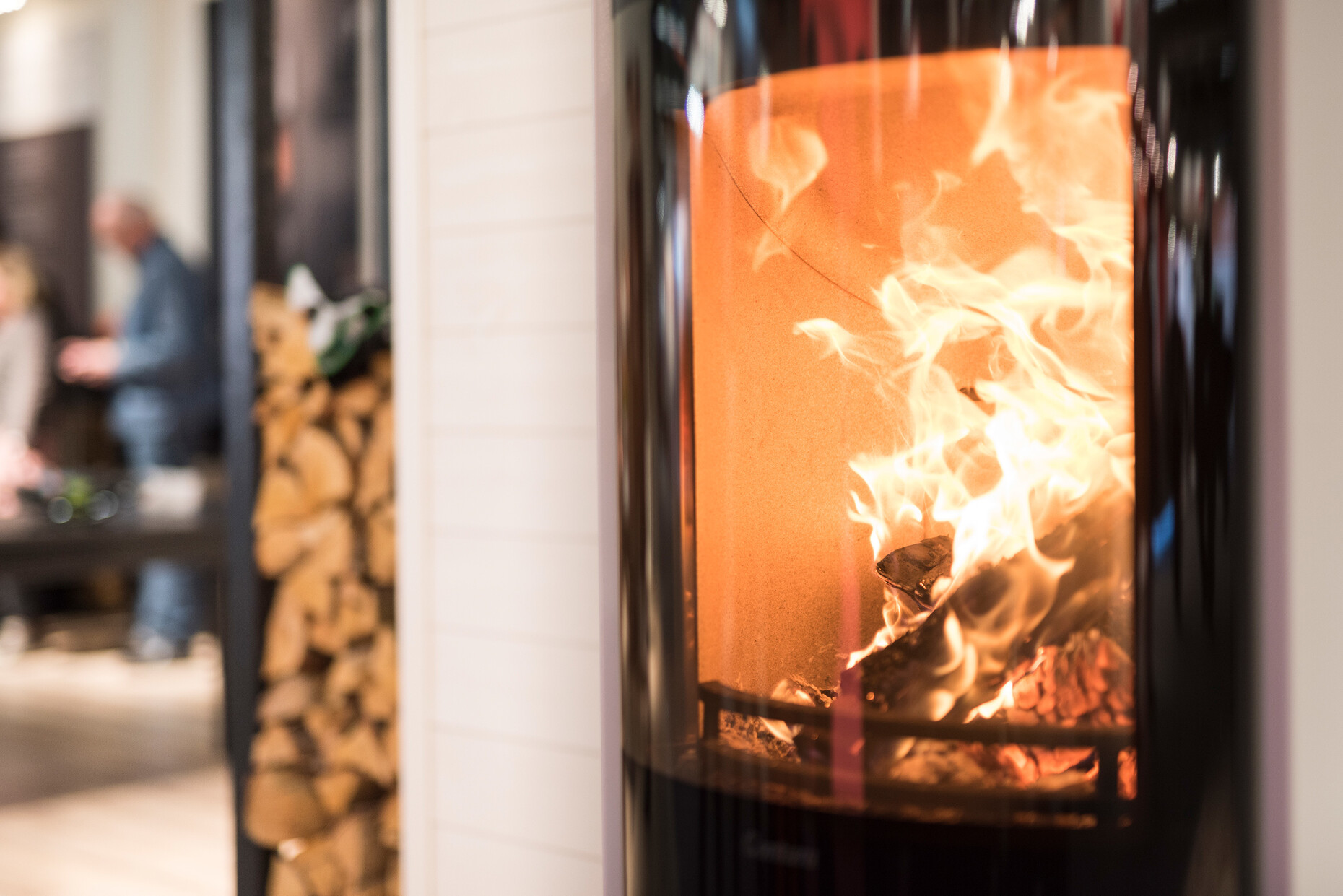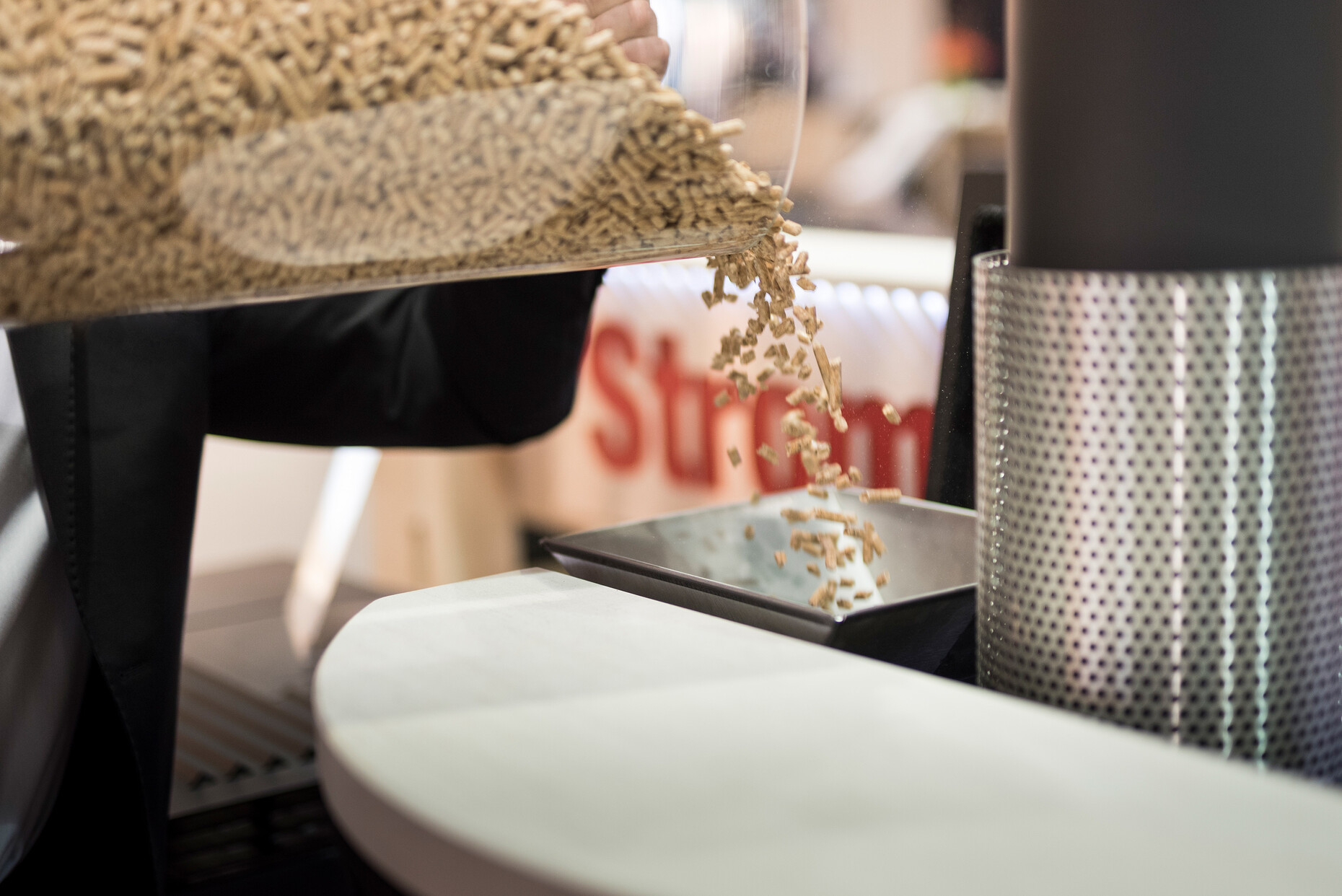Getting hot in here
While the debate rages about the end of lignite as a fuel for power generation, in the area of domestic heating the focus is shifting to another natural product: wood. Where wood-burning stoves were long considered a luxury product generating environmentally harmful emissions, now, thanks to calorific optimization and careful filtering, they have become an appealing choice, including for those aiming to become carbon-neutral. Burning wood is no longer sinful per se, and justifying it on the pretext of homely nostalgia is long outdated, as demonstrated again this year by the numerous exhibitors in the domestic stoves segment at the world’s leading trade show for water, heating and climate – ISH, which takes place in Frankfurt from March 11 to 15, 2019.
The art to heating with wood or wood pellets lies in customizing the system to correspond to specific requirements. Modern technology such as that seen at the exhibition can be integrated not only into new heating systems, but older, existing ones too. An initial, fundamental distinction needs to be made between standalone appliances like gas-fired stoves or pellet stoves and appliances built specially. ISH is making the differences clear in advance: While modern gas stoves are constructed as a mass product made of steel or cast iron – connected quickly and easily to an existing chimney and fitted with a decorative window – the pellet stove is fundamentally different in the way it burns fuel. This fuel – small pellets produced by compressing sawdust – is automatically channeled from a storage compartment via a spiral conveyor to the combustion chamber, where it is ignited electrically. The crucial advantage? The temperature can be adjusted via a thermostat, based on which the stove regulates the quantity of fuel and the air supply automatically. The keyword here is “smart”: Some manufacturers are now offering their stoves with WiFi capability, so even fire itself can be operated via smartphone.
In contrast, the installation of a tiled stove is a more complex solution – it needs to be constructed by a tradesman, the stove-builder, and is fired more classically using the fuel of choice on the base of the combustion chamber. It takes time to heat them up, but thanks to its storage mass such a stove is able to retain heat for up to 24 hours. By contrast, the warm-air tiled stove, the modern version of the design, heats up much more quickly thanks to a heating element made of steel or cast iron. Thanks to this addition and the window feature, the stove combines the advantages of a warm-air tiled stove with the cozy sight of the flames.
Yet that’s not all. The real trick is this: “Through the combination of a heat pump or solar power system and a modern stove, domestic heating and warm water can be continually driven by renewable and carbon-neutral energies,” as the trade show literature puts it, summarizing the overview of the innovations. While heat pumps are used to extract heat from the air outside and convert it into heat, solar power provides for hot water. Since the two systems are not sufficient in winter, however, it’s worth combining them with a domestic stove. This, in turn, can be equipped with a heat exchanger, which feeds water warmed by the fire into the heating network. Once the fire has been extinguished, a buffer tank takes care of heating by channeling previously stored excess heat energy back into the heating and hot water system.
Going beyond the innovations from exhibitors, the Stove Forum in hall 9.2 provides expert knowledge about wood as a renewable energy source, as well as energy and climate policy in general. It’s also here that the “Designpreis Ofenflamme 2019” will be presented to a winning stove design on the Wednesday of the fair. Of course, the use of wood requires not only modern technology, but also sustainable forestry. Only this way can wood become a cozy alternative as well as a convincing element of the energy transition – not to mention, in light of rising prices for fossil fuels such as heating oil, a way to save money.
ISH
Messegelände Frankfurt/Main
March 11 to 15, 2019
Heating with wood
Halls 9.2 and 11.1
Ofenforum
Hall 9.2, D05
Opening hours:
March 11 to 14, 2019: 9 AM – 6 PM
March 15, 2019: 9 AM – 5 PM (open to the public)




















